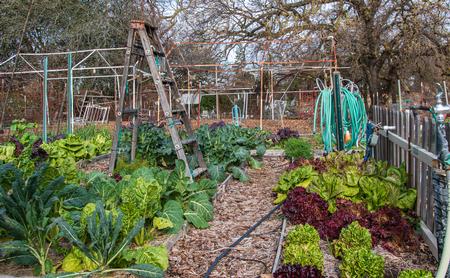Location

When deciding where to plant your vegetable garden, choose the best available location by keeping the following factors in mind:
- Good soil
- Level ground
- Water supply
- Adequate light
- Close to home
Good soil
Although you may have little choice concerning the soil type available to you, you can use a simple test to find out whether your soil is in good condition for planting. Squeeze a handful of soil to test for moisture content. If the squeezed soil forms a clump, the soil is too wet to work. If you work soil that contains this much moisture, it might form into cement-like clumps that can cause problems for the remainder of the year. If the soil crumbles easily when it is squeezed, it is in an ideal condition to work. Tilling or working the soil and incorporating organic soil amendments (such as compost, lawn clippings, or peat moss) can improve poor soil and can increase yield, even in good soil.
Level ground
Level ground is easier to prepare, plant, and irrigate than sloping ground. If you must plant on sloping ground, run rows across the slope, not up and down, to keep the soil from washing away during irrigation.
Water supply
Locate your garden near an abundant supply of water that is easily reached with a garden hose.
Adequate light
Vegetables need at least 8 hours of sunlight each day for best growth. Plant vegetables where they are not shaded by trees, shrubs, walls, or fences. Trees and shrubs also compete with vegetables for the water available in the soil.
Close to home
Plant your garden near your home, if possible. You are more likely to spend time working in your garden if you can reach it easily. A nearby garden also means that you do not have to carry tools back and forth over a long distance. If your garden is large enough for you to use power tools, be sure you have easy access to a road or driveway wide enough for equipment movement.
